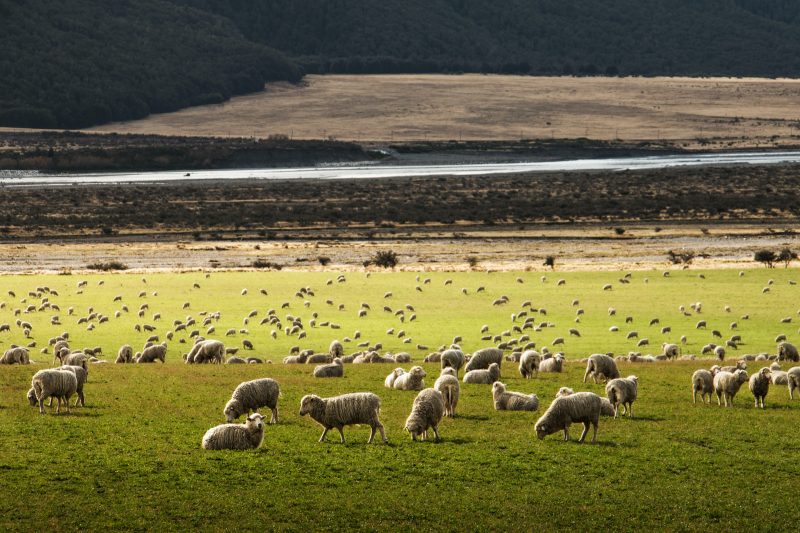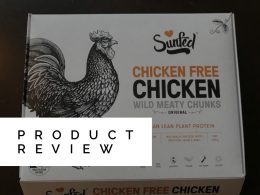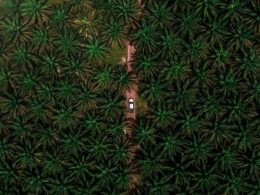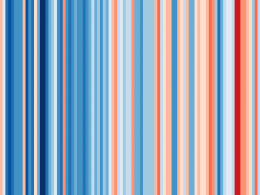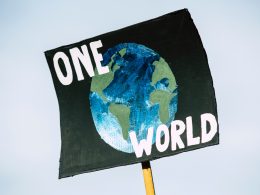NZ encompasses a total land area of approx 26.8 million hectares, or 268,000 square kilometres. That includes the North Island, South Island and around 600 smaller islands that make up our part of the world.
Consider that, as at 2016, a full 31.9% of that land was being used for farming Cows and Sheep (not including dairy).
Another 9.8% of our total landmass was used for dairy farming.
That’s 41% of our entire landmass, including islands, forests, national parks and cities, dedicated solely to cows and sheep.
Meanwhile, all the NZ produced fruit & veggies we eat and everything we export, is produced on less than 1% of our total landmass (0.8%).
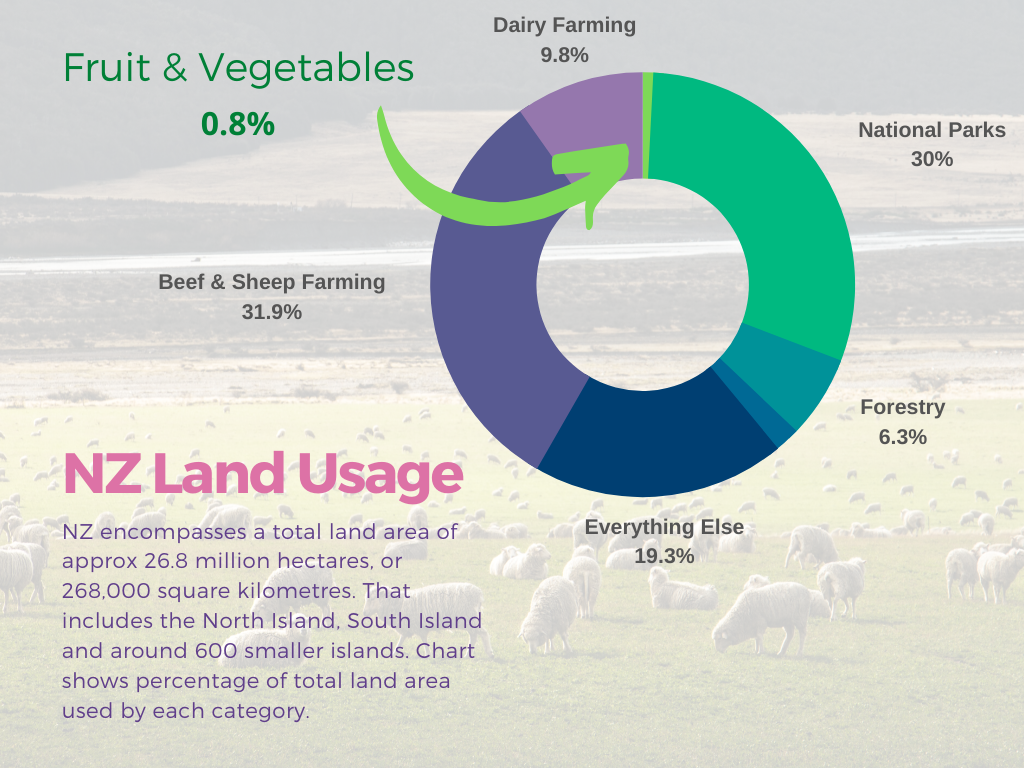
When you walk into a supermarket, the produce section takes up a lot more space than the meat section, but in reality, producing all that fruit and veg (minus anything we import) only takes up 2% of the space it takes to produce everything in the meat section.
Now I accept there are reasons for this, not all land is suitable for growing crops etc. But just keep this in mind next time you do your shopping: Whatever you buy in the veggie / fruit section, the footprint of that product and thereby the space your needs take up in the world is so much lower compared to anything you might find in the meat aisle.
What about jobs and exports?
Meat and Wool sectors produce $8.1b in exports and generate 100,000 FTE jobs (as at 2016). At the same point, horticulture was producing $3.4b per year in exports and 39,000 FTE jobs. That’s 39% of the jobs and 42% of the exports. while taking up less than 2% of the space.
Horticulture jobs are localised and somewhat condition dependant. There are areas of the country where wine grapes grow best, and areas where kiwifruit and avocados grow well. I understand we can’t grow those goods anywhere but I think it’s worth putting these numbers together to show the efficiency of growing produce vs. growing animals for meat.
Demand for meat is dropping and this is a concern for our country due to meat being one of our main exports. I think these stats should provide us with great promise. Surely, based on those numbers we can be self-sufficient as a country when it comes to food and grow our produce exports to replace anything lost from exporting meat in the decades ahead.
As at 2016 (the most recent stats available):
- Main urban areas cover 5,078 square kilometres, 1.9 percent of New Zealand’s land area. Source: http://archive.stats.govt.nz/browse_for_stats/Maps_and_geography/Geographic-areas/urban-rural-profile/main-urban-areas/land-environment.aspx#
- New Zealand’s net stocked planted production forest covered an estimated 1.697 million hectares as at 1 April 2019 (6.3%) Source: https://www.mpi.govt.nz/news-and-resources/open-data-and-forecasting/forestry/new-zealands-forests/
- Approx 30% of NZ’s total land mass is protected area – National parks and reserves. Source: https://en.wikipedia.org/wiki/Protected_areas_of_New_Zealand
- Waikato and Taranaki had the greatest proportion of their land area in dairying (28.7 percent and 28.1 percent, respectively).
- Less than 1 percent of New Zealand’s total land area was used for growing fruit and berries (0.5 percent or 120,894 ha) and vegetables (0.3 percent or 69,686 ha).
Other source links:
Size of NZ https://en.wikipedia.org/wiki/New_Zealand
Converting SQM to Hectares https://www.calculateme.com/area/square-miles/to-square-kilometers/268
Meat and wool industry summary https://www.westpac.co.nz/assets/Business/Economic-Updates/2016/Bulletins-2016/Industry-Insights-Meat-and-Wool-November-2016.pdf
Horticulture sector summary https://westpac.co.nz/assets/Business/Economic-Updates/2016/Bulletins-2016/Industry-Insights-Horticulture-July-2016.pdf
Meat industry website https://www.mia.co.nz/
Farming production NZ https://en.wikipedia.org/wiki/Agriculture_in_New_Zealand#Horticulture
Distribution of employment https://www.statista.com/statistics/436457/employment-by-economic-sector-in-new-zealand/
Horticulture stats https://www.hortnz.co.nz/news-events-and-media/other-news/new-zealands-food-story-the-pukekohe-hub/
Photo by Martin Bisof on Unsplash





